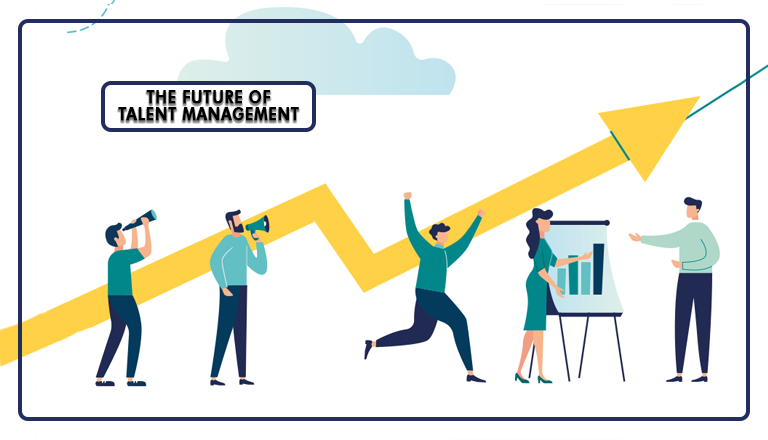A recent Manpower Group survey shows that 75% of organizations suffer from a shortage in the talent needed to move their organizations forward. Despite this shortage, 95% of employees in a survey done by McKinsey believe that their organizations’ talent management strategies are lacking or falling short of meeting their objectives. So why is that? And what can organizations do to enhance the effectiveness of their talent management strategies?
To answer these questions, we shall take you through a quick overview of the current trends affecting the talent force and how talent management strategies need to adapt to match these trends.
Trends Affecting the Current Talent Force
1. Demographic Shifts
Most developed countries around the world are facing varying degrees of decline in population growth, causing many shifts in the overall regional shares of the global workforce. As a result, the African share of the global talent force is expected to rise by 5%, while the European share is expected to decline by 4% by 2030. Consequently, Africa and Asia will continue to be home to close to three-quarters of the total global talent force. This has a significant impact on how organizations should manage their talent. For organizations to survive, they must adapt their talent management strategies to embrace higher diversity and inclusion (D&I). This includes being open to hiring global talent, providing remote work opportunities, developing employees’ multicultural collaboration skills, and building fair and equitable global compensation and benefits schemes.
Moreover, as the Boomers generation retires, the future workforce will be 75% Millennial by 2025. This fact has interesting implications. In a study done by PwC, when asked which benefits they would most value from an employer, Millennials named training and development and flexible working opportunities over financial benefits. It is apparent that, with the Millennial generation, talent management professionals must be aware that they are facing a generation that puts a higher emphasis on ‘purpose’ and ‘flexibility’ as important benefits that attract them to employers and help them stay. Therefore, the old ways of simply hiring the right people and ‘paying them to stay’ will no longer work. Talent professionals must adapt their strategies to offer a more attractive employer value proposition to the Millennial generation.
2. Changes in the Future of Work
The Future of Skills report by LinkedIn Economic Graph shows that the skills required for the future of work have changed by more than 25% since 2015. Not only that the skills have significantly changed, but they are also likely to continue to change by anywhere from 39 to 44% by 2025. With this rate of change, simply hiring the right people and providing basic compliance training will no longer work. Also, expecting to simply hire external talent when no internal candidates are suitable will no longer work too. With this rate of change, chances are that the talent that organizations will need in the future will be in shortage inside and outside the organization. This is why talent development professionals must be on the lookout for what skills their organizations will need in the future and must proactively help their current talent prepare for that.
Moreover, as a result of the 2020 pandemic, employees are now more accustomed to different work arrangements than in the pre-pandemic period. In fact, in a Buffer survey, a whopping 99% of employees say that they would like to work remotely at least some of the time for the rest of their careers. Even more, in an Owl Labs report, 32% say that they will leave their organizations if they have to return to work on-site full-time. With these statistics in mind, organizations must adapt their talent management strategies for a more remote workforce.

3. Changes in the Nature of Leadership
Top-down hierarchical organizational models are dead and network-based holocratic models are the new rule. The younger knowledge workers expect self-managed teams, independence in decision-making, and knowledge and resource sharing among organizational departments.
Moreover, Millennials have learned the lessons of ages past, so most Millenials believe that they are personally responsible for their own skill and career development. This gives rise to a more widespread, previously overlooked type of leadership– self-leadership. The future workforce will assume more self-leadership than the previous ones, both for personal development and for the achievement of organizational objectives. Therefore, talent management strategies must evolve to build, support, and retain this new kind of leadership.
The Current Status of Talent Management
So, with all these trends in the talent force, how are organizations doing with managing their talent? Not so well! Research shows that only 5% of employees think their organization’s talent management strategies are very effective and only 23% of managers and senior executives working on talent management believe their current acquisition and retention strategies will work. So, how can we turn things around?

Build a Talent Management Strategy for the Future
A mistake talent professionals sometimes do is to assume that what worked before will continue to work. But with the current trends affecting the talent force, it is evident that a change needs to be made. Here are some general changes that talent professionals must start integrating into their current strategies to be more relevant to the future.
1. Globalize & Localize
As you set your talent management strategy, be open to hiring, developing, and maintaining global talent. This is no easy feat but a global workforce requires access to a myriad of local recruitment platforms, global training providers, and global compensation and benefits schemes. You cannot simply post a job vacancy on a single local platform and expect to attract global talent. More importantly, to reap the benefits of hiring global talent, you must put in the effort to make them feel included. Your D&I programs should provide focus on the localization of holidays, celebrations, company-wide communications, training, etc. It should also put emphasis on providing fair promotion and career advancement opportunities to all employees regardless of which part of the world they are working from.
2. Decentralize
As said earlier, Millennials simply have taken matters into their own hands. Therefore, relinquish your control and establish talent management solutions that give employees control over what career progression paths to choose, individual training needs they would like to address, how they would like to address them, what organizational goals they would like to pursue, and how they would like to be rewarded for their work. In fact, giving employees personal control over their career development significantly increases their chances of achieving their development goals.
3. Socialize
You are now dealing primarily with the ‘social media generation’. This is the generation that grew up with immediate access to anyone anywhere. They could easily network with the top C-Suite leaders of any organization on LinkedIn. They could easily look up information anywhere anytime, learn from online resources shared by others on social platforms, and reach out with questions on forums. Of course, this generation comes to work with different expectations about how knowledge and people are accessed.
This is why your talent management strategy needs to leverage this social lever. Do you use social media for talent acquisition? Do you leverage company referrals? Do you create a social media buzz around your employer value proposition? Do you incorporate social learning in your training solutions? Do you have an organizational knowledge base accessible to and searchable by all employees? Do you have an internal platform that enables immediate communication with anyone in the company, including the CEO? The answers to these questions show how well you have socialized your talent management processes.
4. Personalize
Last but not least, this new Millennial talent force is used to receiving personalized solutions in all aspects. Therefore, a one-size-fits-all approach to training, compensation, and motivation does not work. Diversify the modalities of your learning solutions, offer a wide range of benefits that employees can choose from, and diversify your organization’s employee engagement initiatives to provide employees with options to choose from.
How Can XpertLearning Help?
In this article, we have given you a quick overview of the top trends changing the face of talent management. If you’re interested in improving your talent management strategy, you can reach out to benefit from our consultancy services. And if you would like to do talent management like a pro, then you may consider purchasing a talent management system. To help you with this decision, you can check out the wide array of options we offer here or, even better, pass by stand C28 at the HR Summit and Expo, Dubai, on November 15th and 16th to watch a live demo of our talent management solutions and discuss your needs. To obtain a free entry, register here.

